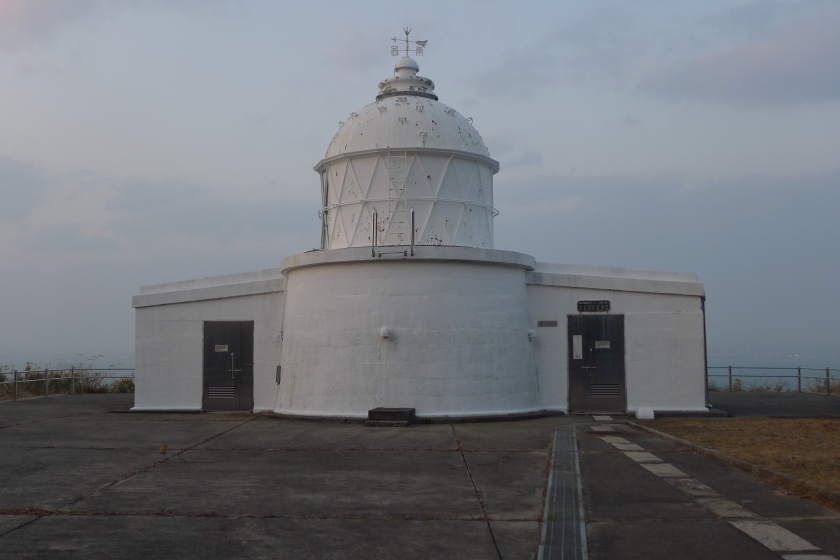江埼灯台
This lighthouse, at the very north of Awaji, was one of the first Western-style lighthouses to be built in all of Japan. It was one of a series of lighthouses in the country built by a Scottish engineer as part of a program of marine safety initiated during the early Meiji period.
The lighthouse first shone on June 14, 1871, and still functions to this day. It was badly damaged in the earthquake of 1995, but has been restored to its original form since then. You can, however, see signs of earthquake damage on the steps which lead up to the lighthouse from the coastal road.
The lighthouse is a few kilometers from Iwaya’s port, traveling counter-clockwise along the main coastal road. The lighthouse is not visible from the road, but there’s a small parking area at the side of the road which includes a model lighthouse. From here, steps lead up to the lighthouse itself.

Other points of interest
There’s an intriguing sign on the lighthouse giving the date of its “illumination” in both English and Japanese. The English date uses the standard Gregorian calendar (June 14, 1871), while the Japanese date gives the Meiji era year (明治四年) and the equivalent day and month in the Chinese calendar (四月二十七日).
Only 18 months after the lighthouse was built, Japan officially abandoned the Chinese calendar and switched to using the Gregorian calendar. This is thus a sign from a fairly short period of Japanese history when the Gregorian and Chinese calendars were being used alongside each other, with the months not matching up.

At the same time that the lighthouse was built, a stone bungalow was also erected as a home for the lighthouse keeper. It’s an intriguing building, with a functional, colonial exterior, Western style living quarters inside, and a typically Japanese roof. The house was badly damaged during the earthquake, and was relocated to Shikoku, where it has since been restored: it now sits in the Shikoku Mura museum in the city of Takamatsu.
